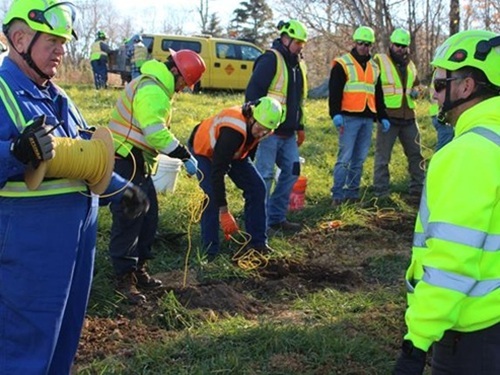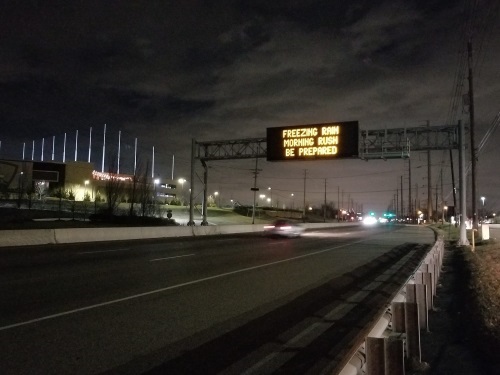New Jersey, Texas, and Virginia are deploying a variety of technologies to help improve the efficiency and safety of commercial trucking operations within their borders.
[Above photo by the New Jersey DOT]
The New Jersey Department of Transportation recently implemented a real-time traffic alert system for commercial vehicle drivers that provides in-cab traffic congestion updates and slowdown alerts on 647 miles of New Jersey’s highways, including the New Jersey Turnpike, Garden State Parkway, and Atlantic City Expressway.
The system – developed in partnership with Intelligent Imaging Systems, Drivewyze, and INRIX – alerts commercial vehicle drivers about two to three miles before the slowdown begins, giving them plenty of time to reduce speed to help prevent crashes, the agency said.

“The ability to alert commercial vehicle drivers to unexpected traffic conditions will improve safety for everyone driving on New Jersey’s highways,” explained NJDOT Commissioner Diane Gutierrez-Scaccetti in a statement.
“By warning drivers of congestion that is miles ahead, drivers of large commercial vehicles will have the extra time needed to safely slow down,” she added.
Meanwhile, the Texas A&M Transportation Institute is using INRIX data to enhance truck-parking analytics to support a project for the Texas Department of Transportation and the Federal Highway Administration as part of larger freight planning strategy.

The goal of this project is to understand how traffic data can foster a better understanding of truck parking demand and help state DOTs make better freight planning decisions, noted TTI Research Scientist Nicole Katsikides in a statement.
TTI noted that converting data to a “visual medium” allows for a comparison of multiple data types, from parking and land-use data to safety and congestion data. Cross-comparing different data types also makes it easier to understand issues created by a lack of parking and highlights how “valuable partnerships” are between local governments and businesses investing in finding and implementing solutions, the group said.
Finally, the Virginia Department of Motor Vehicles is using in-road sensors to identify commercial trucks operating on I-81 on unsafe tires.
The Virginia DMV said it removed 13,000 unsafe tires from commercial vehicles on I-81 in just one year using this technology – called Tire Anomaly and Classification System or TAC – which enables weigh station technicians to identify commercial vehicles traveling with flat, missing, mismatched or underinflated tires and call the driver into the station to arrange for a repair.
“Tire blowouts can cause serious crashes. By detecting unsafe tires, most times before a truck driver even knows there is a problem, we can prevent crashes from occurring and save lives,” explained Virginia DMV Commissioner Richard Holcomb in a statement. “TACS gives them [DMV employees] another tool with which to work.”
 States
States
NCDOT Staff Participate in ‘Explosive’ Technical Training
December 19, 2025 States
States

